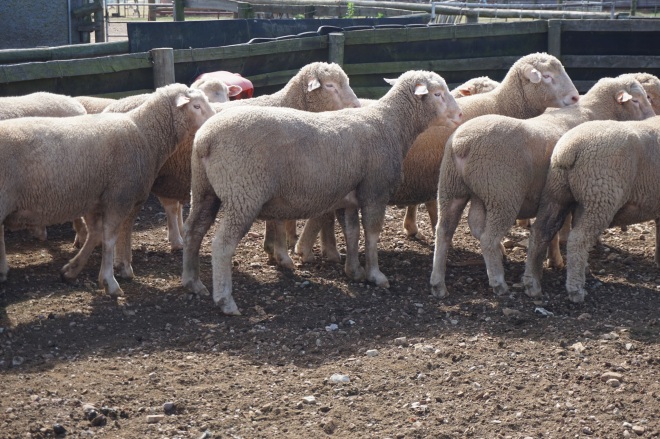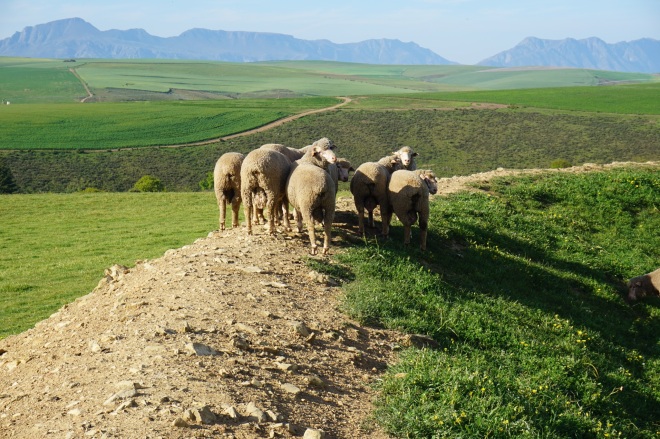Merino, Dohne, Dorper, SAMM and Dormer………… They have got it all wrong on the postcards!!!
Selecting an animal on its suitability to the environment was one of the biggest trends I picked up from my time in South Africa. ‘They need to be robust and fit’ – was a repetitive statement.
Fitness – the ability of an animal to produce viable offspring capable of surviving to the next generation – Charles Darwin
Of the ‘big five’ sheep breeds, none of them are particularly known as a maternal breed. This means a lot of emphasis is placed on the ‘fitness’ of the animal and genetic values such as NLW (number lambs weaned) and EPI (ewe production Index) are used to select rams with a higher ‘potential’ for fertility.
However, there is again a huge range in farming practices, particularly when looking at ram breeding. From selling rams at shows on visual appearance only to selling rams on full genetic breeding values and pedigree including dexterity testing all rams. I found this interesting and since they started, cull almost no rams out now on dexterity. ‘It doesn’t matter how good the genetics are if they can’t pass them on’ – Swarco Dohnes.
Interestingly, the South Africans have a breeding value for phenotype or constitution. Even more interestingly, one one farm we went to, the animals that seem to be what they are looking for phenotypically, negatively correlates to fertility. They believe it is because the natural shape has been bred out of the animal in an aid to breed a ‘well balanced’ animal with a good carcase.

Dormer Rams (SAMM Dorset Horn cross) – Kinko Domers, Swellendam, Western Cape
“nature didn’t have economics in mind” – a great quote by one of the merino breeders I met with. Although ‘balance’ for marketing purposes is important, it was interesting to consider the effect it may be having on the animals ‘fitness’.
I think I’ll leave you to contemplate the wool:meat ratio. The Dohne association and in particular Cameron McMaster who is a Dohne Consultant, says that CFW (clean fleece weight) should be 7% maximum of body weight at ‘yearling’ age. He says if income from wool is more than 30% of the gross margin, reproduction is being compromised. I found this very interesting and comes back to breeding a ‘fit’ animal that can reproduce and raise its offspring. I am interested in finding out more about this concept.
I was very impressed with the work being done in South Africa, a lot we can learn from.

